Experimental and Numerical Analysis for Eccentricity Solution in Double-Layer Space Truss
Abstract
1. Introduction
2. Geometric Determination of Eccentricity in Typical Connection Applied DLST
2.1. Eccentricity Solution with Spacer
2.2. Preliminary Numerical Simulation with Typical Connections
2.3. Preliminary Numerical Simulation Results
3. Experimental Program
3.1. Testing on Reduced Space Trusses
3.2. Results of the Testing on Reduced Space Trusses
3.3. Testing in Full-Scale Space Trusses
3.4. Considerations about Experimental Tests
3.5. Numerical Simulation
4. Conclusions
- Typical Connections without structural reinforcement result in local collapse with distortions due to eccentricity with bending moment and premature rupture without taking advantage of the bar’s resistant capacity;
- Typical Connections reinforced without the use of spacers with just the overlapping plate did not increase resistance and broke locally;
- Tests on Typical Connections using spacers, on a small scale, but without the overlapping plate, failed locally in the stamped area of the top chord with an increase of only 24% in relation to Typical Connections without the spacer. Furthermore, there was no global failure with buckling of the bars;
- In tests carried out with a Typical Connection, on a small scale, with a spacer together with the superimposed steel plate, the best results show a gain in resistance of around 43% compared to Typical Connections without reinforcement. In these prototypes, all failures were characterized by global buckling;
- The parametric study with FE in ABAQUS demonstrated that the spacers of the full-scale truss are subjected to normal stress of around 8.96 MPa. Conversely, the parametric study showed that the normal stress flow in the spacers is not linear for the different truss spans;
- To study the application of new spacers in design, the mechanical behavior of spacers for different types of space truss spans was presented with the aim of making it easy for designers to choose the eccentricity correction element with previously calculated normal stresses;
- Through numerical simulation, it was demonstrated that the limitation on the use of spacers with recycled tires is for the use of trusses with spans over 30.00 m. This is because the compression stress (63.69 MPa) can confine the spacer and reduce the height of the element, compromising the accuracy in solving the eccentricity.
Author Contributions
Funding
Data Availability Statement
Acknowledgments
Conflicts of Interest
References
- Makowski, Z.S.; Ramaswamy, G.S.; Eekhout, M.; Suresh, G.R. Book Review: Analysis, Design and Construction of Steel Space Frames. Int. J. Space Struct. 2002, 17, 243. [Google Scholar] [CrossRef]
- Chen, Z.; Li, J.; Zhang, S.; Yue, Q.; Huang, S. Progressive collapse demolition of double-layer space truss under different demolition load conditions. Eng. Struct. 2023, 294, 0141–0296. [Google Scholar] [CrossRef]
- Koushky, A.; Dehdashti, G.; Fiouz, A. Nonlinear Analysis of Double-Layer Grids with Compositive Nodes under Symmetric and Unsymmetrical Gravity Loads. Int. J. Space Struct. 2007, 22, 133–140. [Google Scholar] [CrossRef]
- Silva, W.V.; Silva, R.; Bezerra, L.M.; Freitas, C.A.S.; Bonilla, J. Experimental Analysis of Space Trusses Using Spacers of Concrete with Steel Fiber and Sisal Fiber. Materials 2020, 13, 2305. [Google Scholar] [CrossRef]
- Gioncu, V. Instability Problems in Space Structures. Int. J. Space Struct. 1985, 1, 169–183. [Google Scholar] [CrossRef]
- El-Shami, M.; Mahmoud, S.; Elabd, M. Effect of floor openings on the capacity of composite space trusses. J. King Saud Univ.—Eng. Sci. 2018, 30, 130–140. [Google Scholar] [CrossRef]
- El-Sheikh, A. New space truss system—From concept to implementation. Eng. Struct. 2000, 22, 1070–1085. [Google Scholar] [CrossRef]
- Freitas, C.A.S.; Silva, W.V.; Bezerra, L.M.; Neto, F.S.; Ribeiro, A.T. experimental analysis of space trusses with typical connections reinforced with steel and sisal-resin spacers. Int. J. Adv. Steel Constr. 2019, 15, 398–405. [Google Scholar] [CrossRef]
- Cleirton, A.S.; Freitas, L.M.; Bezerra, R.M.; Araújo, E.C.; Sousa, G.; Araújo, M.; Bezerra, É.A. New experimental results of the research on Reinforced node in space truss. Int. J. Adv. Steel Constr. 2017, 13, 30–44. [Google Scholar] [CrossRef]
- Rashidyan, S.; Sheidaii, M.R. Retrofitting collapse behavior of double layer space trusses against progressive collapse by force limiting devices. Adv. Steel Constr. 2022, 18, 804–817. [Google Scholar] [CrossRef]
- Silva, W.V.; Bezerra, L.M.; Freitas, C.S.; Bonilla, J.; Silva, R. Use of natural fiber and recyclable materials for spacers in typical space truss connections. J. Struct. Eng. 2021, 147, 04021112. [Google Scholar] [CrossRef]
- Liu, R.; Cheng, T.; Wen, P.; Wang, C.; Wang, G. Effect of the MHS on Earthquake Response of Space Truss Structures under Horizontal Earthquake Motion. Buildings 2023, 13, 523. [Google Scholar] [CrossRef]
- Souza, A.S.C.; Gonçalves, R.M.; De Nardin, S.; Calado, L. A strategy of numerical analysis of space truss connections with stamped bar ends. Int. J. Space Struct. 2008, 23, 143–152. [Google Scholar] [CrossRef]
- Doaei, Y.; Hosseini, S.E.A.; Momenzadeh, A.; Harirchian, E. Investigating the Effect of Screw Size on the Stress Level in MERO Joint for Space Frame Structures. Appl. Syst. Innov. 2021, 4, 84. [Google Scholar] [CrossRef]
- Subramanian, N. Space Structures: Principles and Practice; Multi-Science Publishing: Brentwood, UK, 2007; pp. 213–280. [Google Scholar]
- Bezerra, L.M.; de Freitas, C.A.S.; Matias, W.T.; Nagato, Y. Increasing load capacity of steel space trusses with end-flattened connections. J. Constr. Steel Res. 2009, 65, 2197–2206. [Google Scholar] [CrossRef]
- Mazon, A.A.; Sarmanho, A.; Nunes, G.; Roquete, L.; Neiva, L.H.; Souza, F. Numerical analysis of truss systems with stiffened flattened end-bars. Lat. Am. J. Solids Struct. 2018, 15, 1–24. [Google Scholar] [CrossRef]
- Malite, M.; Maiola, C.H.; Gonçalves, R.M.; Souza, A.C. experimental analysis of the structural performance of space trusses commonly used in Brazil. Int. J. Space Struct. 2001, 16, 253–260. [Google Scholar] [CrossRef]
- de Souza, A.S.C.; Gonçalves, R.M. Mechanism of Collapse of Space Trusses with Steel Hollow Circular Bars with Flattened Ends. Int. J. Space Struct. 2005, 20, 201–209. [Google Scholar] [CrossRef]
- Zhao, X.; Yan, S.; Chen, Y.; Xu, Z.; Lu, Y. Experimental study on progressive collapse-resistant behavior of planar trusses. Eng. Struct. 2017, 135, 104–116. [Google Scholar] [CrossRef]
- Xu, Z.; Yan, S. Progressive-Collapse Mechanism of Suspended-Dome Structures Subjected to Sudden Cable Rupture. Buildings 2023, 13, 1533. [Google Scholar] [CrossRef]
- Murtha-Smith, E.; Murtha-Smith, M.E.; Member, A. Alternate path analysis of space trusses for progressive collapse. J. Struct. Eng. 1998, 114, 1978–1999. [Google Scholar] [CrossRef]
- Malla, R.B.; Nalluri, B.B. Dynamic nonlinear member failure propagation in truss structures. Struct. Eng. Mech. 2000, 9, 111–126. [Google Scholar] [CrossRef]
- Shahzad, M.; Kamran, A.; Siddiqui, M.Z.; Farhan, M. Mechanical characterization and FE modelling of a hyperelastic material. Mater. Res. 2015, 18, 918–924. [Google Scholar] [CrossRef]
- Lee, C.H.; Kim, S.; Han, K.H.; Lee, K. Simplified nonlinear progressive collapse analysis of welded steel moment frames. J. Constr. Steel Res. 2009, 65, 1130–1137. [Google Scholar] [CrossRef]
- Yan, S.; Zhao, X.; Chen, Y.; Xu, Z.; Lu, Y. A new type of truss joint for prevention of progressive collapse. Eng. Struct. 2018, 167, 203–213. [Google Scholar] [CrossRef]
- Ma, Y.; Mi, J.; Yang, X.; Sun, Z.; Liu, C. Prediction model and sensitivity analysis of ultimate drift ratio for rectangular reinforced concrete columns failed in flexural-shear based on BP-Garson algorithm. Structures 2024, 60, 105808. [Google Scholar] [CrossRef]
- ABAQUS. Theory Manual, version 6.14.1; Dassault Systèmes Simulia: Providence, RI, USA, 2014.
- Liu, C.; Fang, D.; Zhao, L.; Zhou, J. Seismic fragility estimates of steel diagrid structure with performance-based tests for high-rise buildings. J. Build. Eng. 2022, 52, 104459. [Google Scholar] [CrossRef]
- Tsai, C.; Palazotto, A. A modified riks approach to composite shell snapping using a high-order shear deformation theory. Comput. Struct. 1990, 35, 221–226. [Google Scholar] [CrossRef]
- Fang, Y.; Sun, Z.-L.; Shang, L. An integrated algorithm for NRSFM with RIKs. In Proceedings of the 2014 Fifth International Conference on Intelligent Control and Information Processing (ICICIP), Dalian, China, 18–20 August 2014; pp. 482–484. [Google Scholar] [CrossRef]
- GB/228.1-2010; Metallic Materials-Tensile Testing-Part 1: Method of Test at Room Temperature. Standards Press of China: Beijing, China, 2010. (In Chinese)
- ASTM A36/36M; Standard Specification for Carbon Structural Steel: Annual Book of ASTM Standards. ASTM: West Conshohocken, PA, USA, 2008.
- ABNT NBR 8800; ABNT (Associação Brasileira de Normas Técnicas) NBR. Design of Steel and Composite Structures for Buildings. ABNT NBR: Rio de Janeiro, Brazil, 2008.
- ASTM E1875-13; Standard Test Method for Dynamic Young’s Modulus, Shear Modulus, and Poisson’s Ratio by Sonic Resonance. ASTM: West Conshohocken, PA, USA, 2013. [CrossRef]
- ANSI/AISC 360; Specification for Structural Steel Buildings. AISC: Chicago, IL, USA, 2016.
- Wu, S.; Fu, Y.; Wu, G.; Xia, M. Numerical simulation study of influence of friction coefficient of die based on Abaqus on V-shaped clamp stamping parameters. Adv. Mech. Eng. 2021, 13, 1–14. [Google Scholar] [CrossRef]
- Vital, W.; Silva, R.; de Morais, M.V.; Sobrinho, B.E.; Pereira, R.; Evangelista, F. Application of bridge information modelling using laser scanning for static and dynamic analysis with concrete damage plasticity. Alex. Eng. J. 2023, 79, 608–628. [Google Scholar] [CrossRef]
- Mäntylä, A.; Hintikka, J.; Frondelius, T.; Vaara, J.; Lehtovaara, A.; Juoksukangas, J. Prediction of contact condition and surface damage by simulating variable friction coefficient and wear. Tribol. Int. 2019, 143, 106054. [Google Scholar] [CrossRef]
- Li, L.; Mu, D.; Liu, Y.; Li, Z.; Yin, Q.; Chang, H. Anchor Behavior of One-Side Bolt with Flip-Top Collapsible Washer. Buildings 2023, 13, 1571. [Google Scholar] [CrossRef]
- Wang, W.; Li, M.; Chen, Y.; Jian, X. Cyclic behavior of endplate connections to tubular columns with novel slip-critical blind bolts. Eng. Struct. 2017, 148, 949–962. [Google Scholar] [CrossRef]
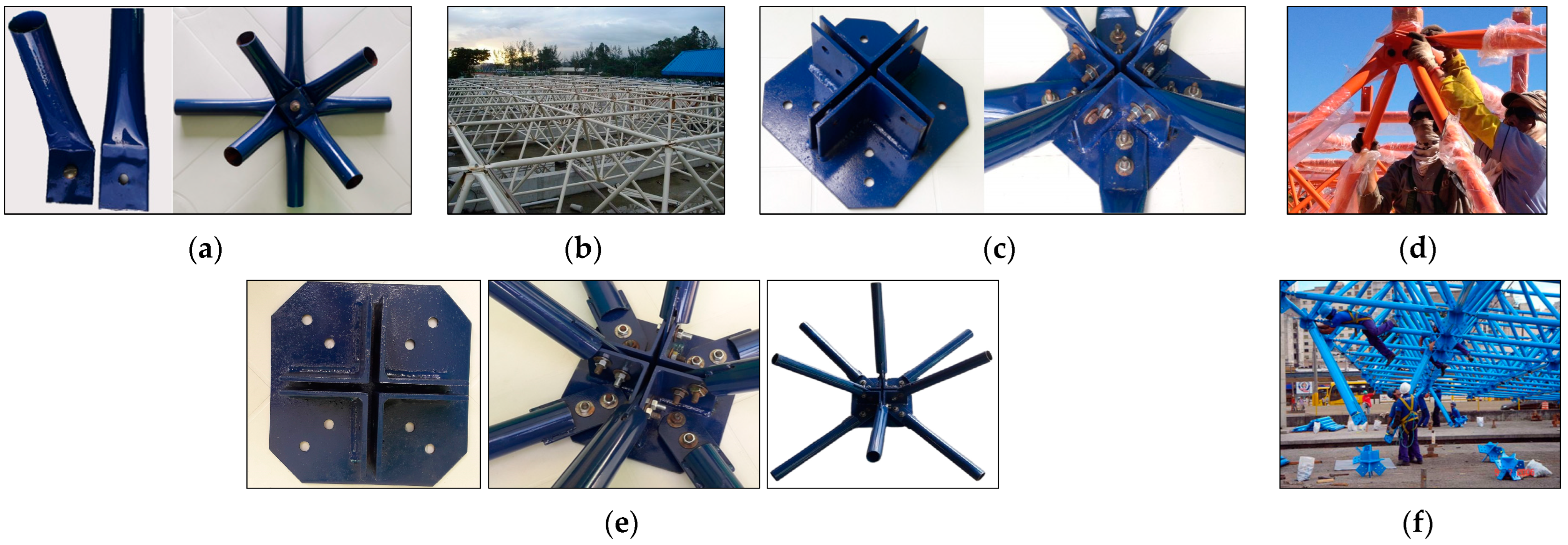

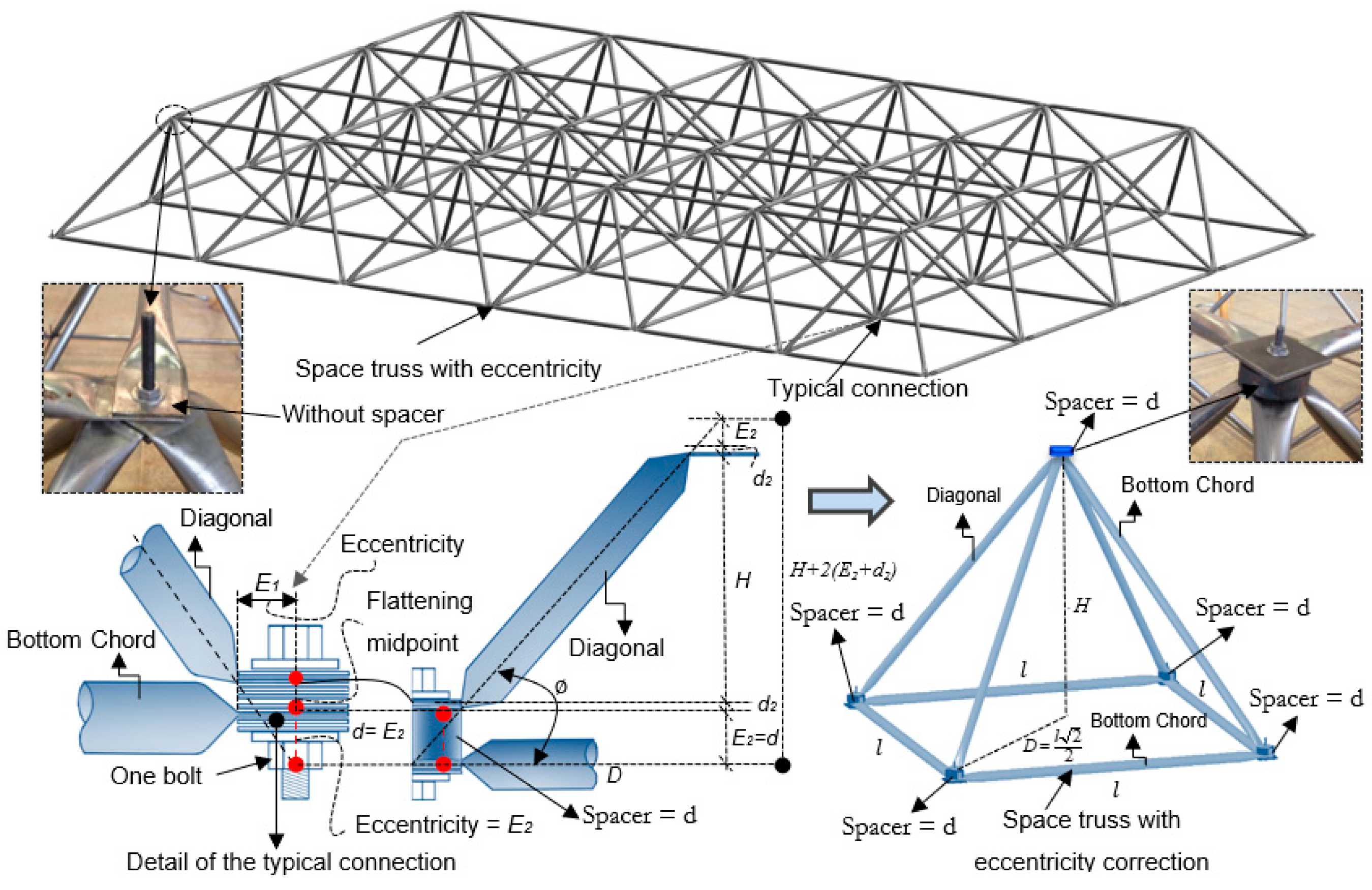
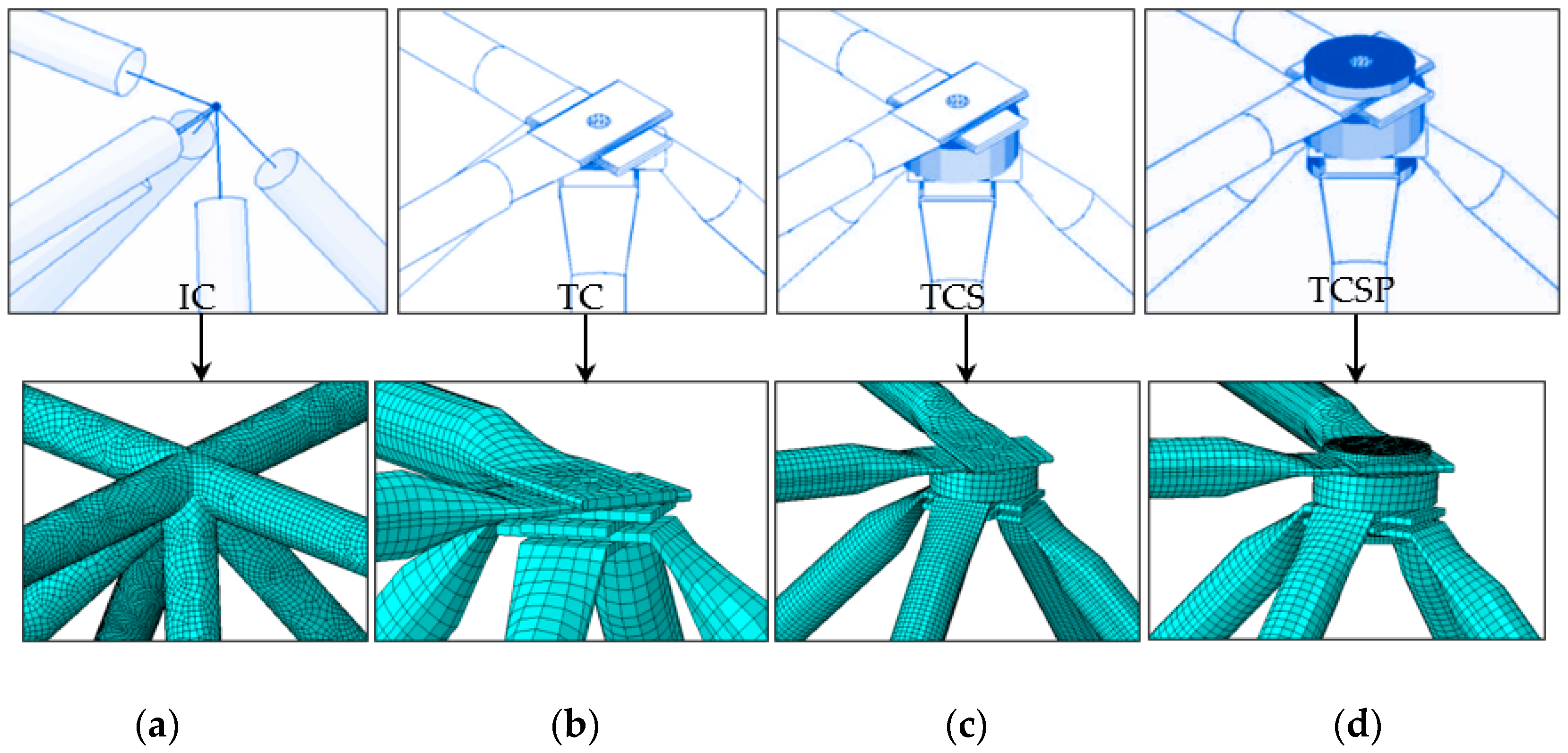
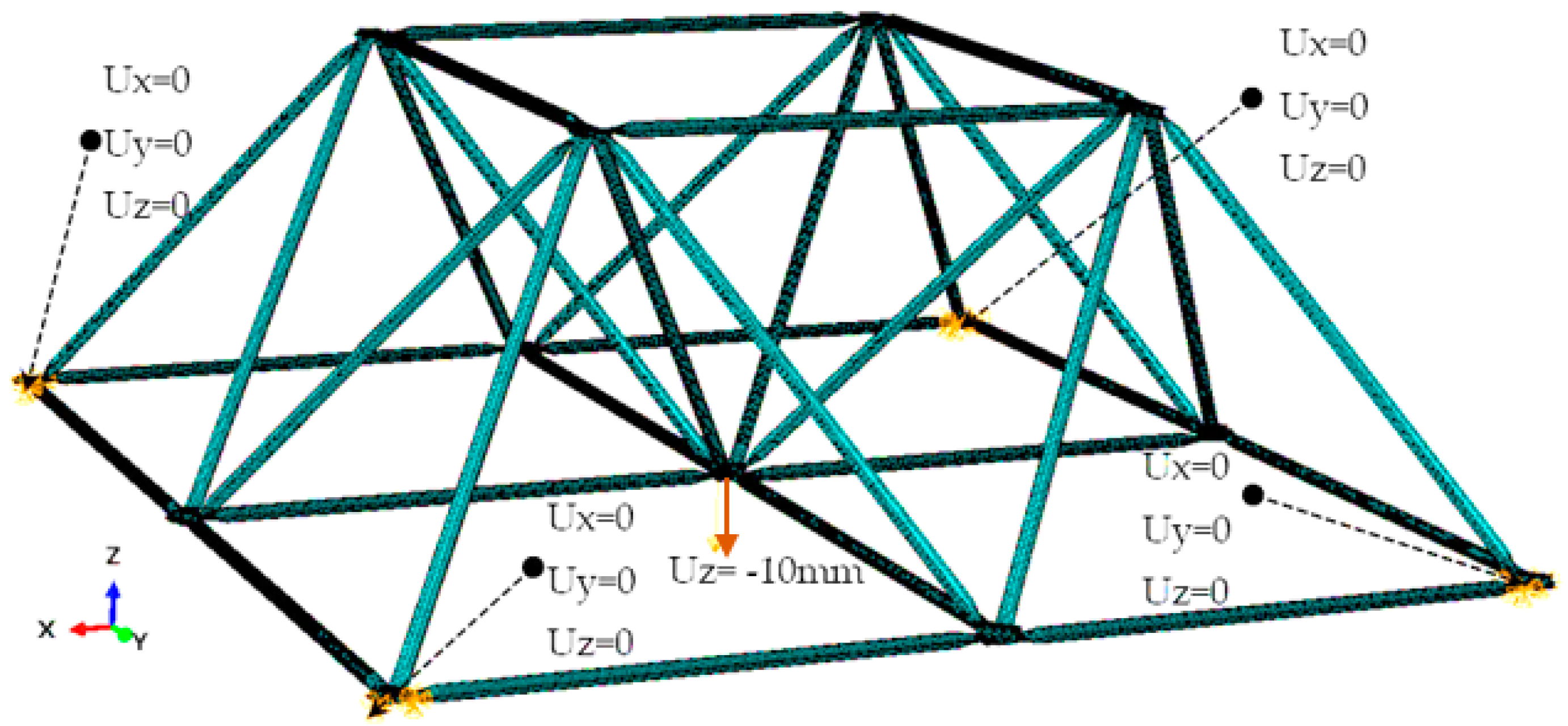
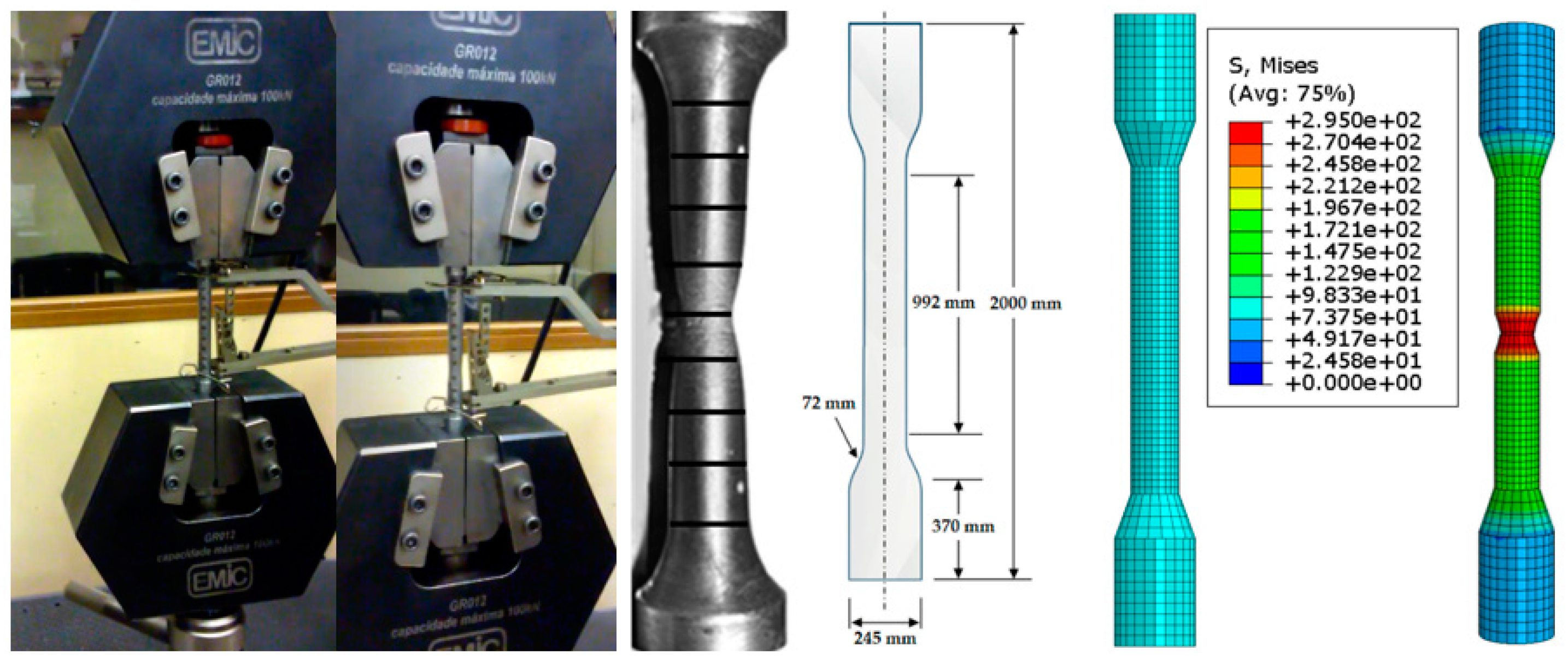




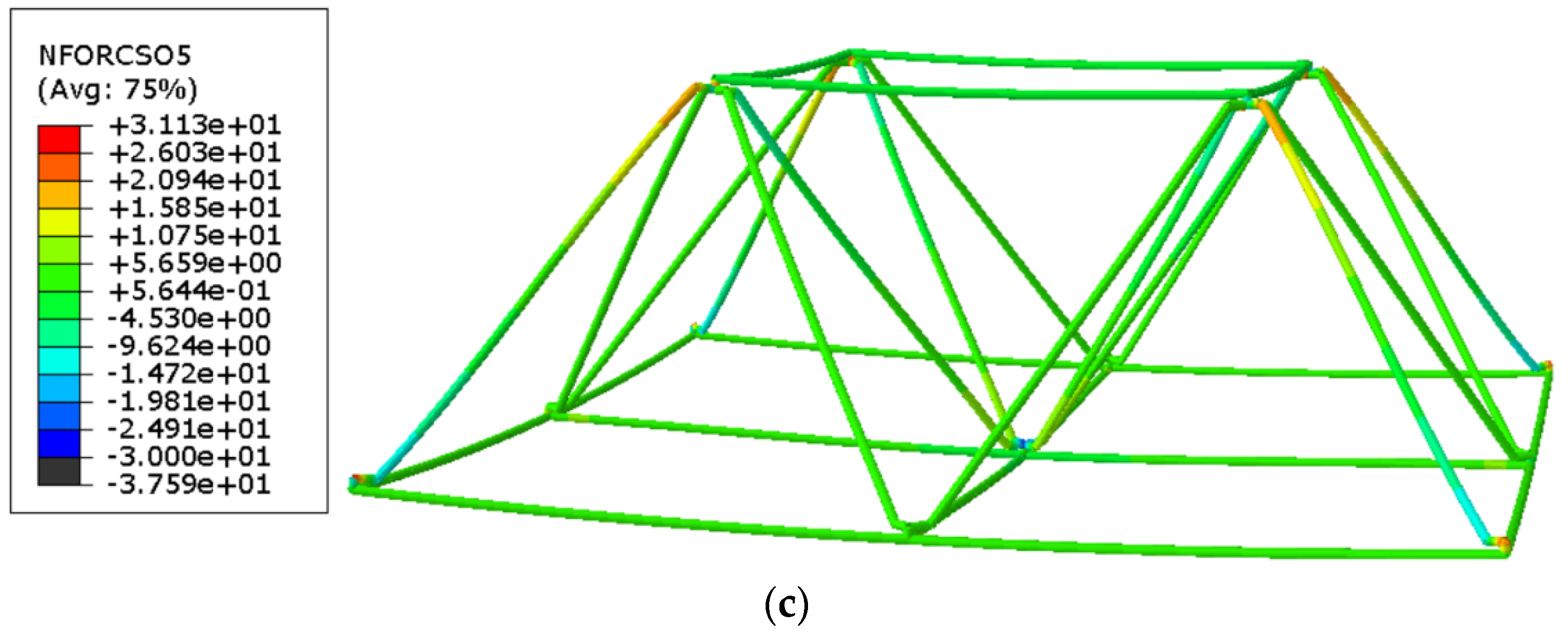
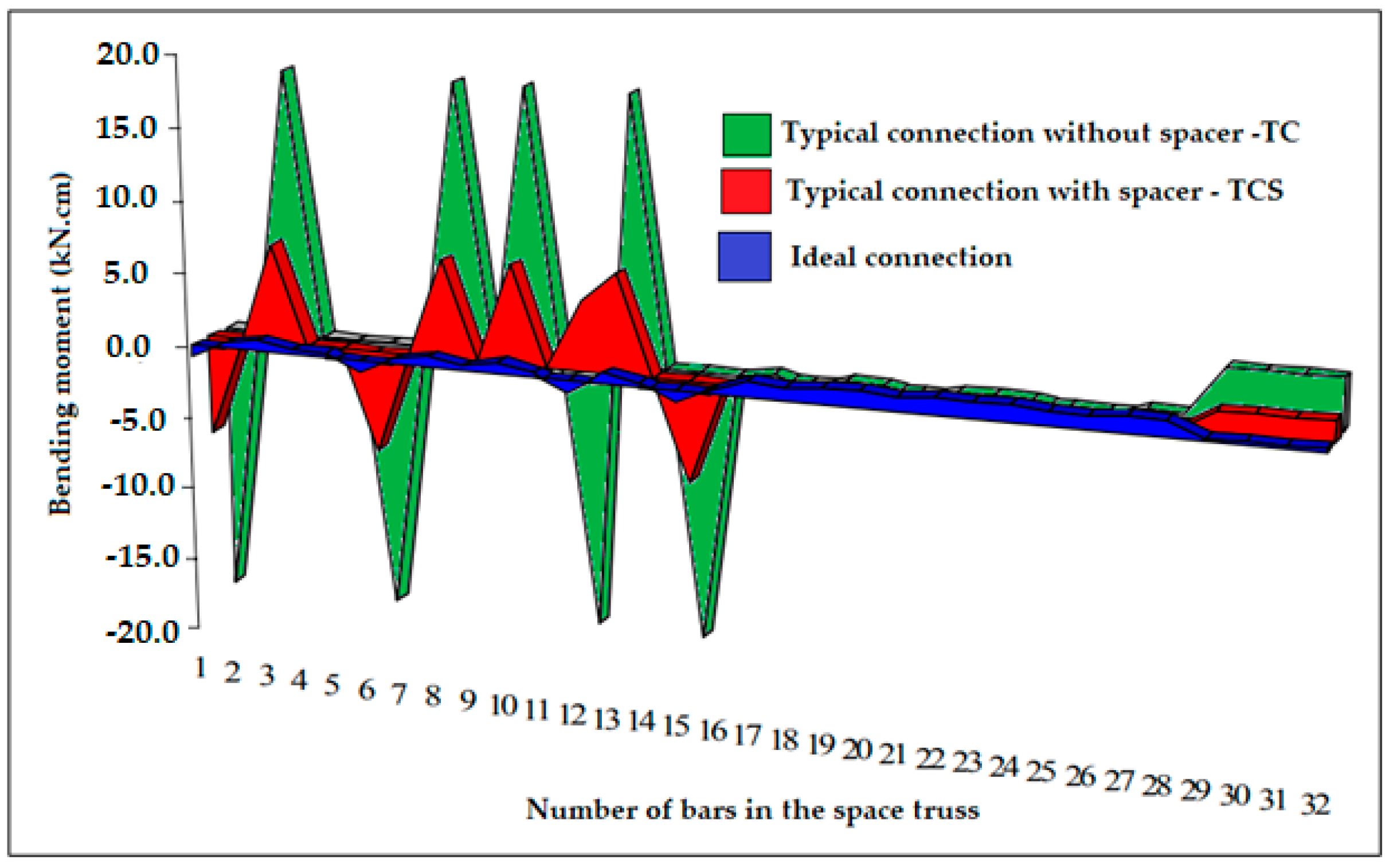


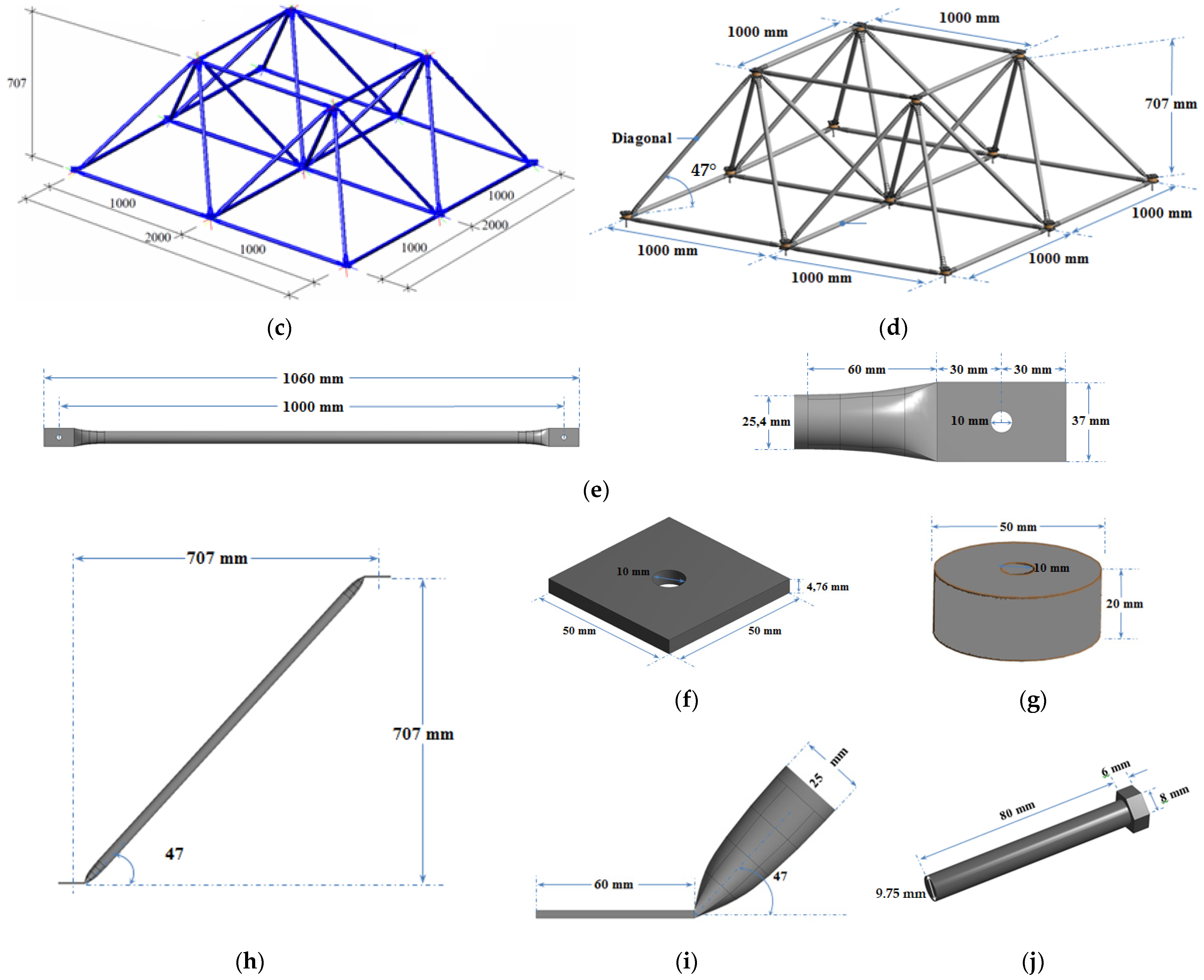









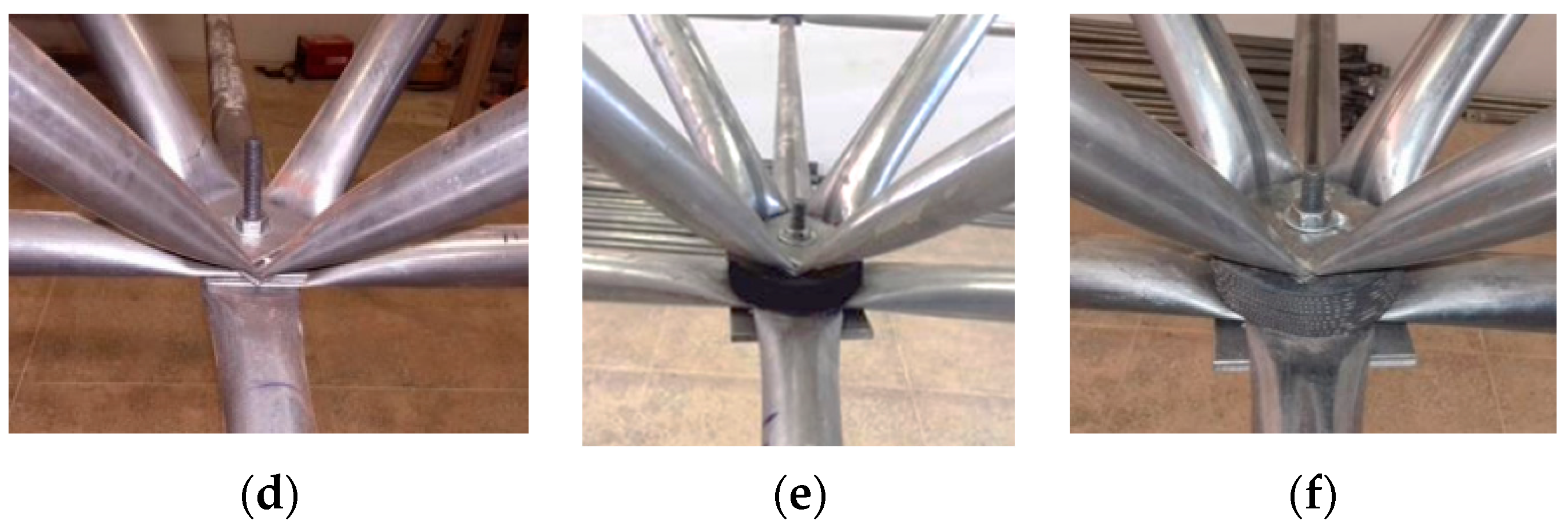
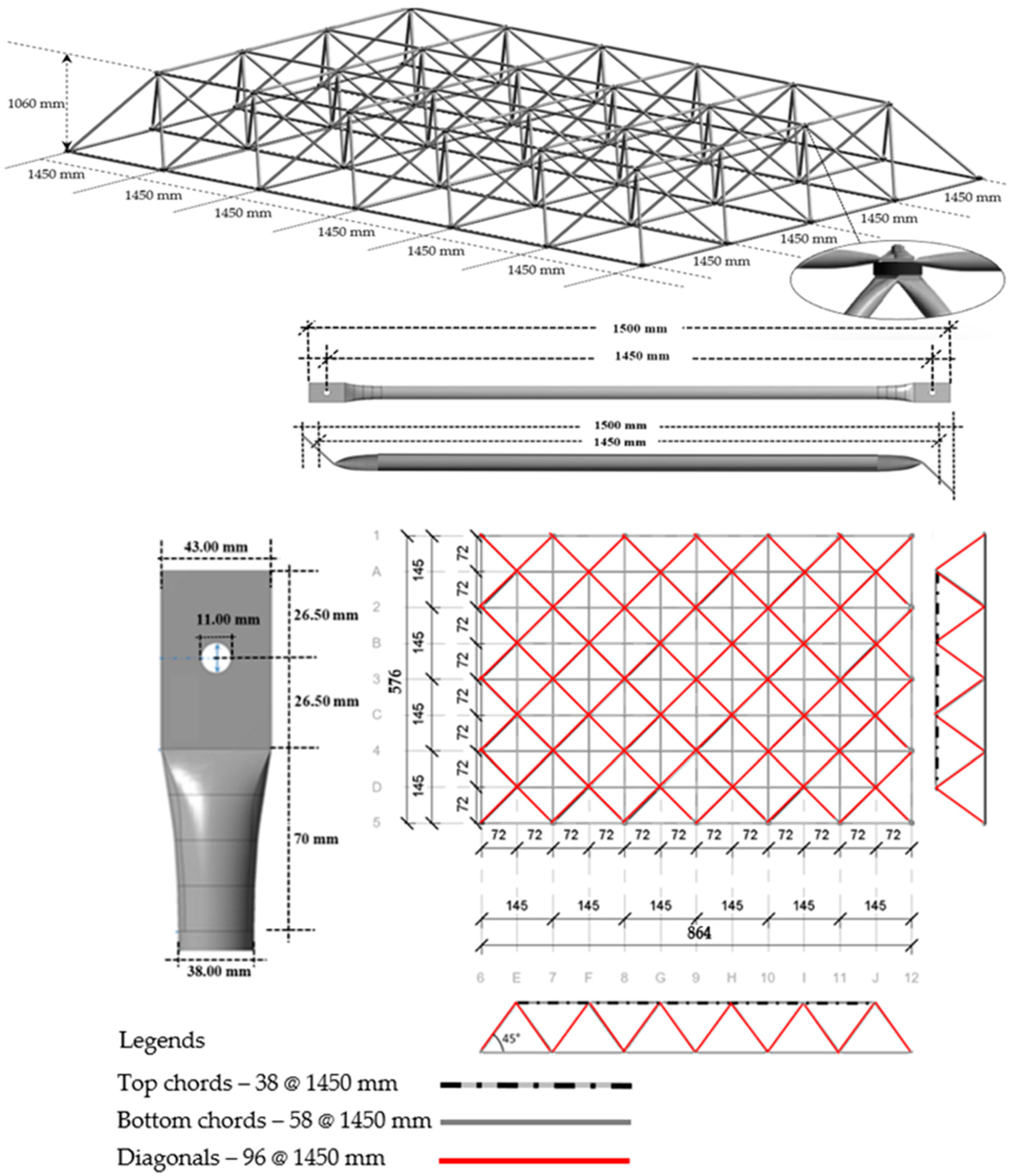
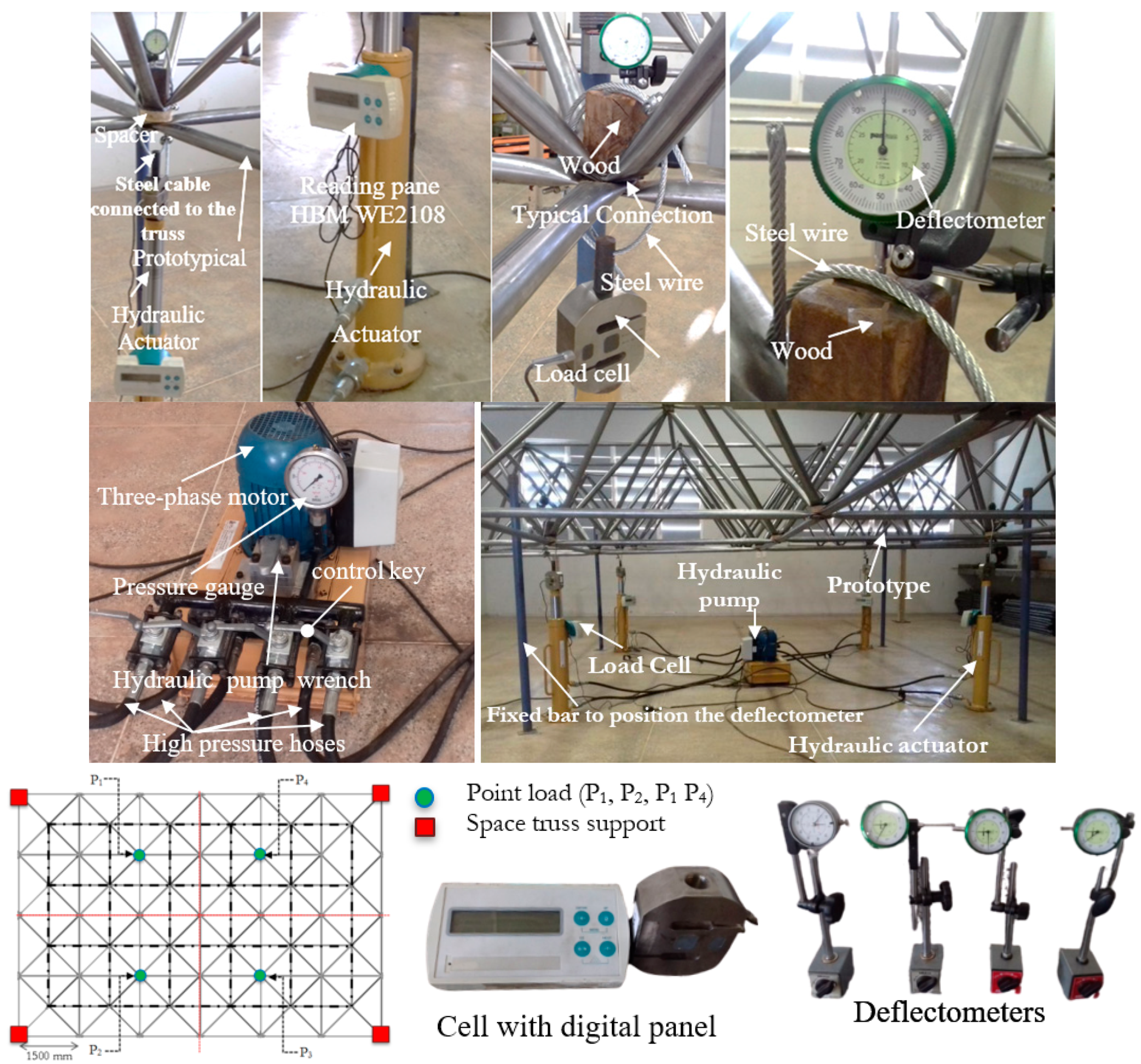






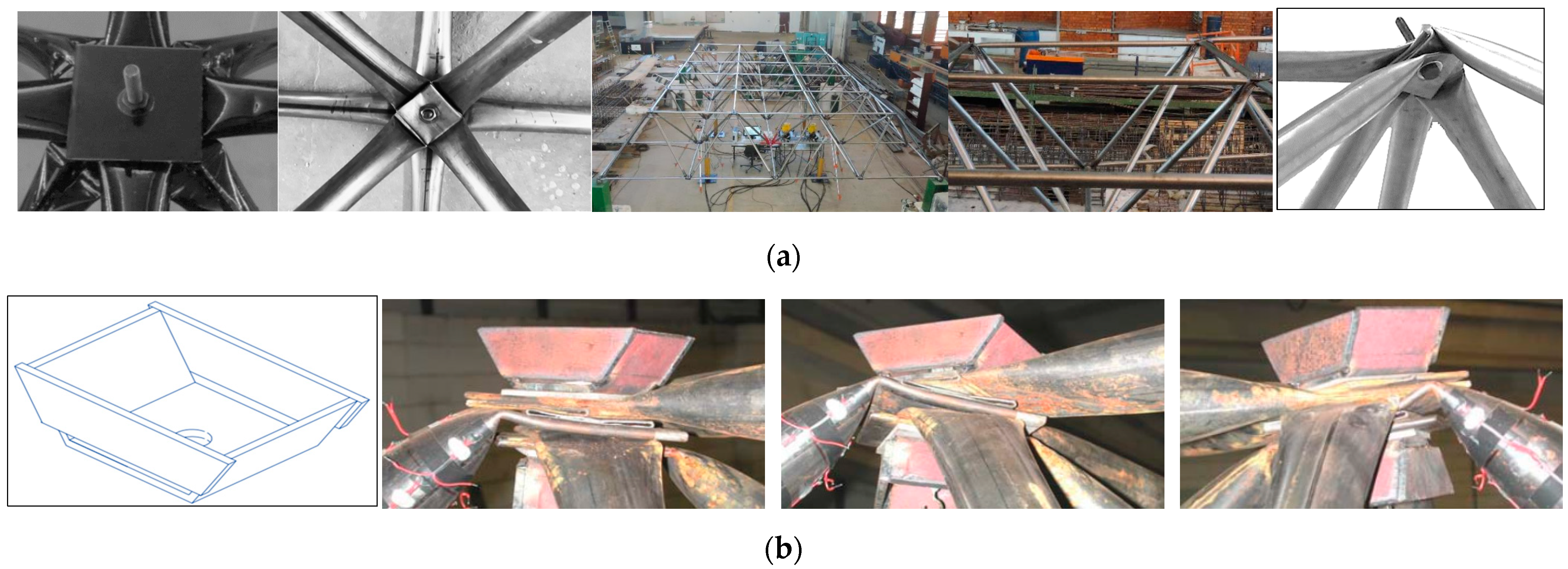
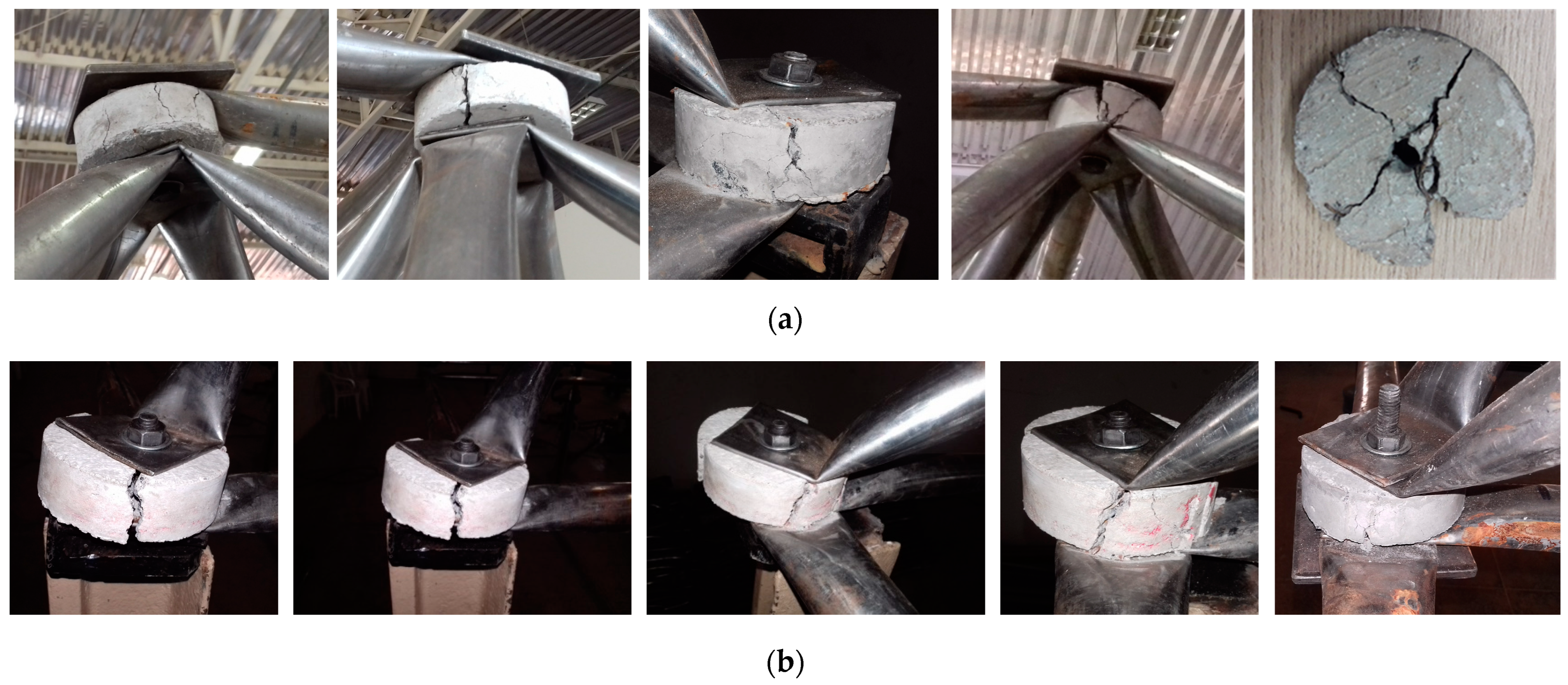
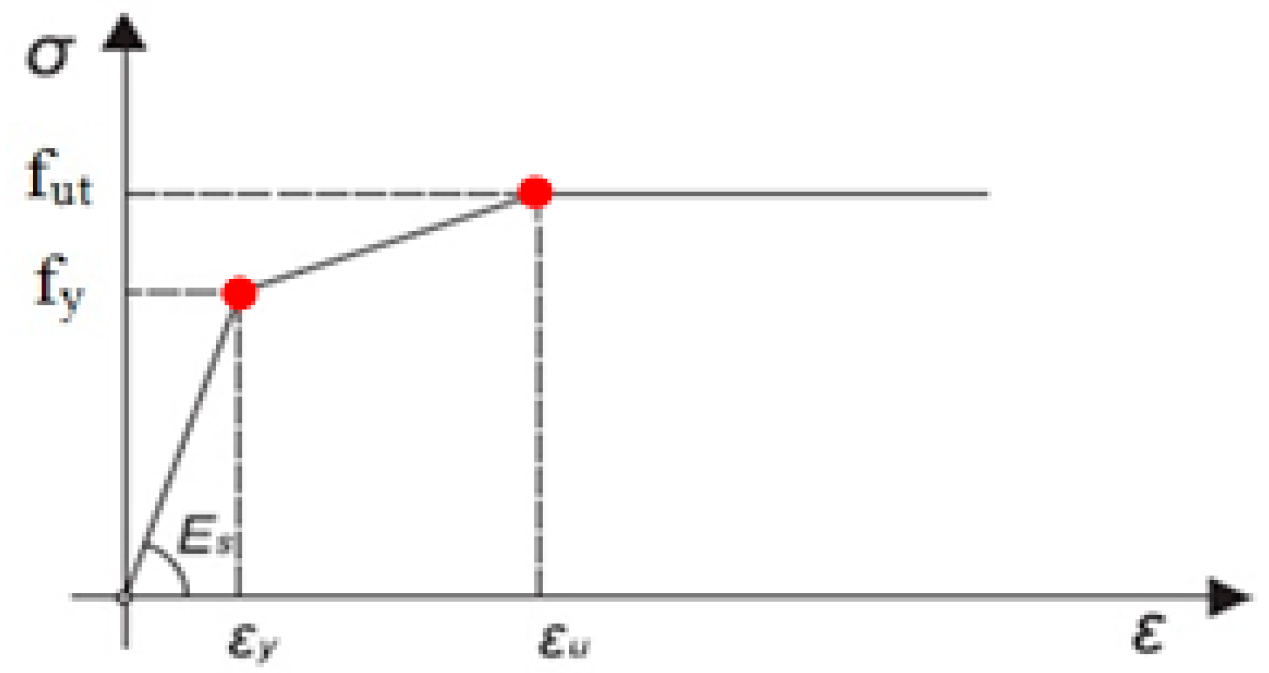
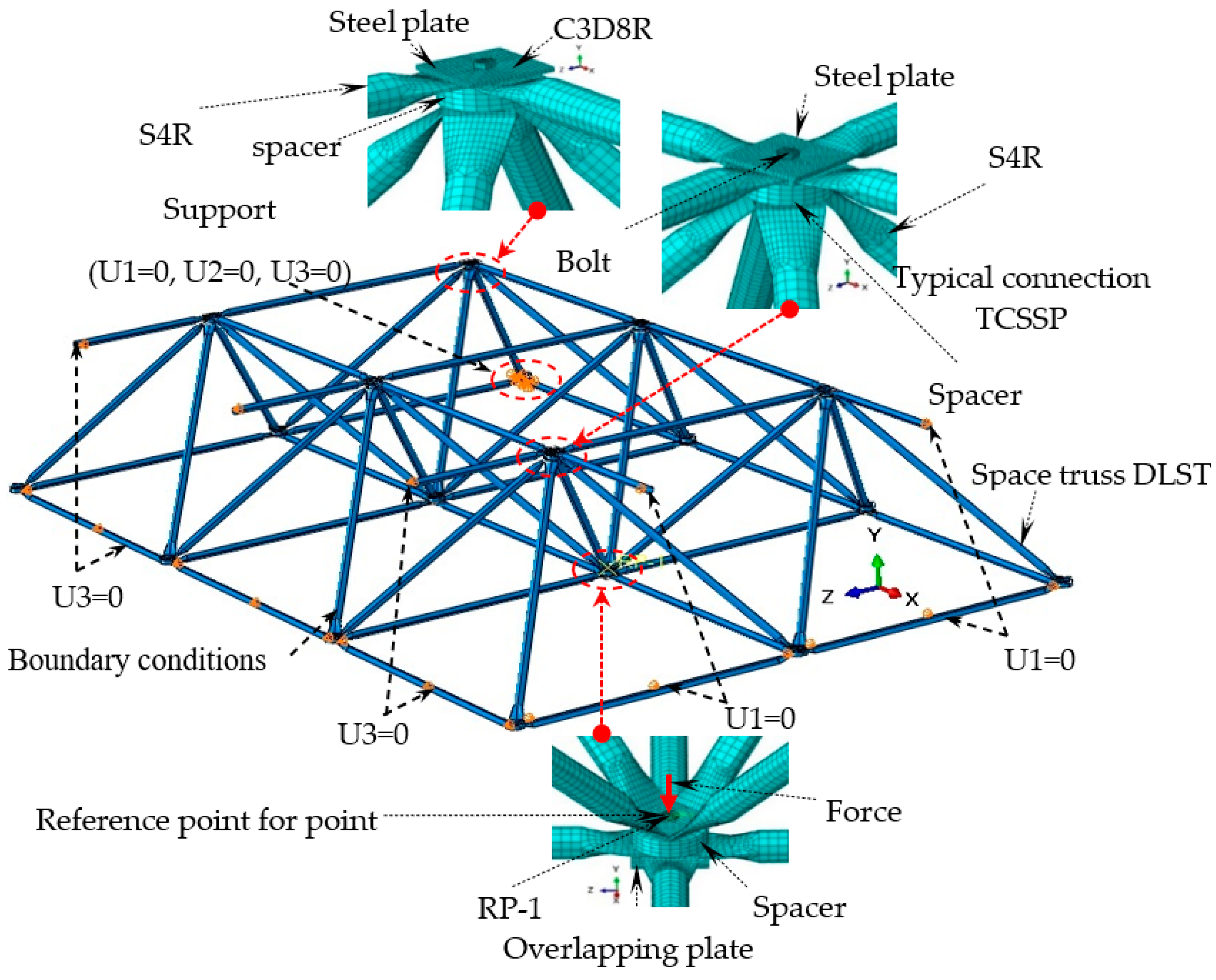



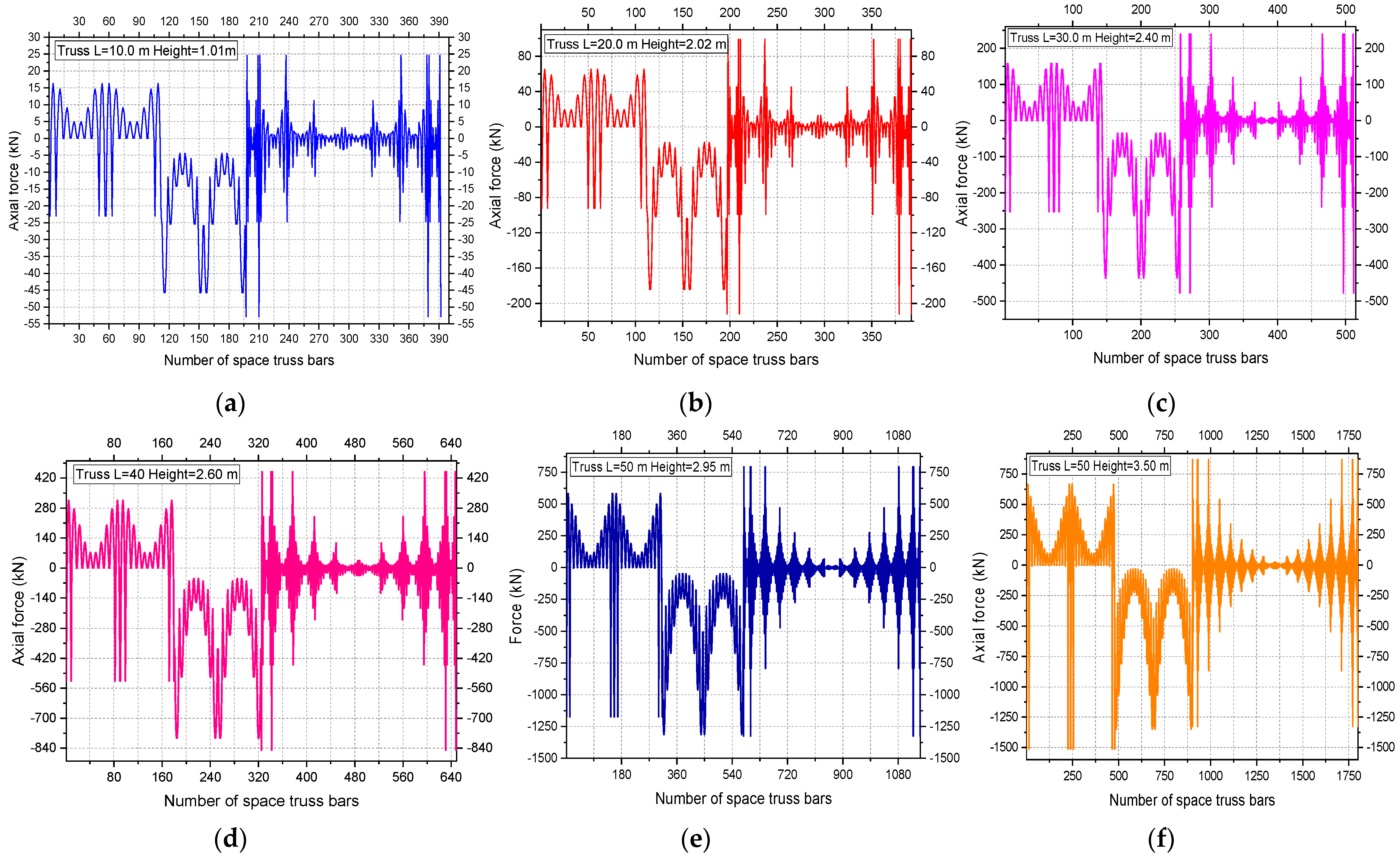
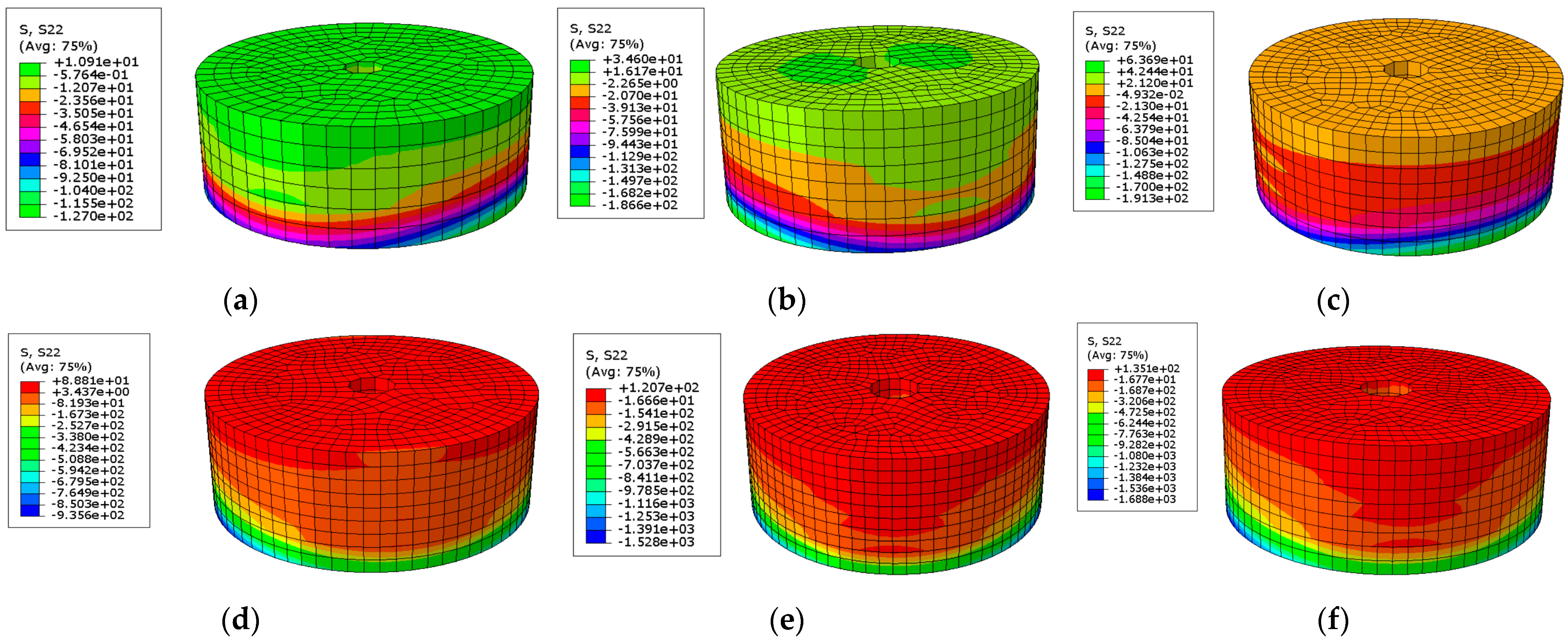
| Source of Test Pieces | fy (MPa) | fu (MPa) | Elongation (%) | Associated Figure |
|---|---|---|---|---|
| Circular machined section GB/T 228.1-2010, ASTM A36/36M [32,33] | 285.00 | 295.00 | 23.34 | Figure 5 |
| Prototypes | Connection | Type of Prototype Tested | Associated |
|---|---|---|---|
| Name | Static Load Test | Figure | |
| PROT 1 | TCST 01 | Typical Connection Space Truss | Figure 11 |
| PROT 2 | TCST 02 | Typical Connection Space Truss | |
| PROT 3 | TCST 01 | Typical Connection Space Truss | |
| PROT 4 | TCSS 01 | Typical Connection with Steel Spacer without reinforcing steel plate | |
| PROT 5 | TCSS 02 | Typical Connection with Steel Spacer without reinforcing steel plate | |
| PROT 6 | TCSS 03 | Typical Connection with Steel Spacer without reinforcing steel plate | |
| PROT 7 | TCSSP 01 | Typical Connection with Steel Spacer with reinforcing steel plate | |
| PROT 8 | TCSSP 01 | Typical Connection with Steel Spacer with reinforcing steel plate | |
| PROT 9 | TCSSP 02 | Typical Connection with Steel Spacer with reinforcing steel plate |
| Prototypes | Connection | Type of Prototype Tested | Associated |
|---|---|---|---|
| Name | Static Load Test | Figure | |
| PROT 1 | TCST 01 | Typical Connection Space Truss | Figure 21 |
| PROT 2 | TCST 02 | Typical Connection Space Truss | |
| PROT 3 | TCSSP 01 | Typical Connection with Steel Spacer with reinforcing steel plate | |
| PROT 4 | TCSSP 02 | Typical Connection with Steel Spacer with reinforcing steel plate | |
| PROT 5 | TCRTS 01 | Typical Connection using Recycled Tire Spacer with reinforcing steel plate | |
| PROT 6 | TCRTS 02 | Typical Connection using Recycled Tire Spacer with reinforcing steel plate |
| Span Truss | Heights (mm) | Bar Number | Axial Force (kN) | Diameter (mm) | Area (mm2) | Spacer (mm) | Normal Stress (MPa) |
|---|---|---|---|---|---|---|---|
| 10.00 | 1010.00 | 392.00 | 554.81 | 80.00 | 5024.00 | 30.00 | 10.91 |
| 20.00 | 2020.00 | 392.00 | 220.00 | 90.00 | 6358.50 | 35.00 | 34.60 |
| 30.00 | 2400.00 | 512.00 | 499.96 | 100.00 | 7850.00 | 40.00 | 63.69 |
| 40.00 | 2600.00 | 648.00 | 843.56 | 110.00 | 9498.50 | 45.00 | 88.81 |
| 50.00 | 2950.00 | 1152.00 | 1364.39 | 120.00 | 11,304.00 | 48.00 | 120.70 |
| 60.00 | 3500.00 | 1800.00 | 1792.90 | 130.00 | 13,266.50 | 55.00 | 135.14 |
Disclaimer/Publisher’s Note: The statements, opinions and data contained in all publications are solely those of the individual author(s) and contributor(s) and not of MDPI and/or the editor(s). MDPI and/or the editor(s) disclaim responsibility for any injury to people or property resulting from any ideas, methods, instructions or products referred to in the content. |
© 2024 by the authors. Licensee MDPI, Basel, Switzerland. This article is an open access article distributed under the terms and conditions of the Creative Commons Attribution (CC BY) license (https://creativecommons.org/licenses/by/4.0/).
Share and Cite
Vital, W.; Silva, R.; Bezerra, L.M.; Oliveira, C.M.; Freitas, C.A.S.; Bonilla, J. Experimental and Numerical Analysis for Eccentricity Solution in Double-Layer Space Truss. Buildings 2024, 14, 608. https://doi.org/10.3390/buildings14030608
Vital W, Silva R, Bezerra LM, Oliveira CM, Freitas CAS, Bonilla J. Experimental and Numerical Analysis for Eccentricity Solution in Double-Layer Space Truss. Buildings. 2024; 14(3):608. https://doi.org/10.3390/buildings14030608
Chicago/Turabian StyleVital, Welington, Ramon Silva, Luciano M. Bezerra, Cynthia M. Oliveira, Cleirton A. S. Freitas, and Jorge Bonilla. 2024. "Experimental and Numerical Analysis for Eccentricity Solution in Double-Layer Space Truss" Buildings 14, no. 3: 608. https://doi.org/10.3390/buildings14030608
APA StyleVital, W., Silva, R., Bezerra, L. M., Oliveira, C. M., Freitas, C. A. S., & Bonilla, J. (2024). Experimental and Numerical Analysis for Eccentricity Solution in Double-Layer Space Truss. Buildings, 14(3), 608. https://doi.org/10.3390/buildings14030608





